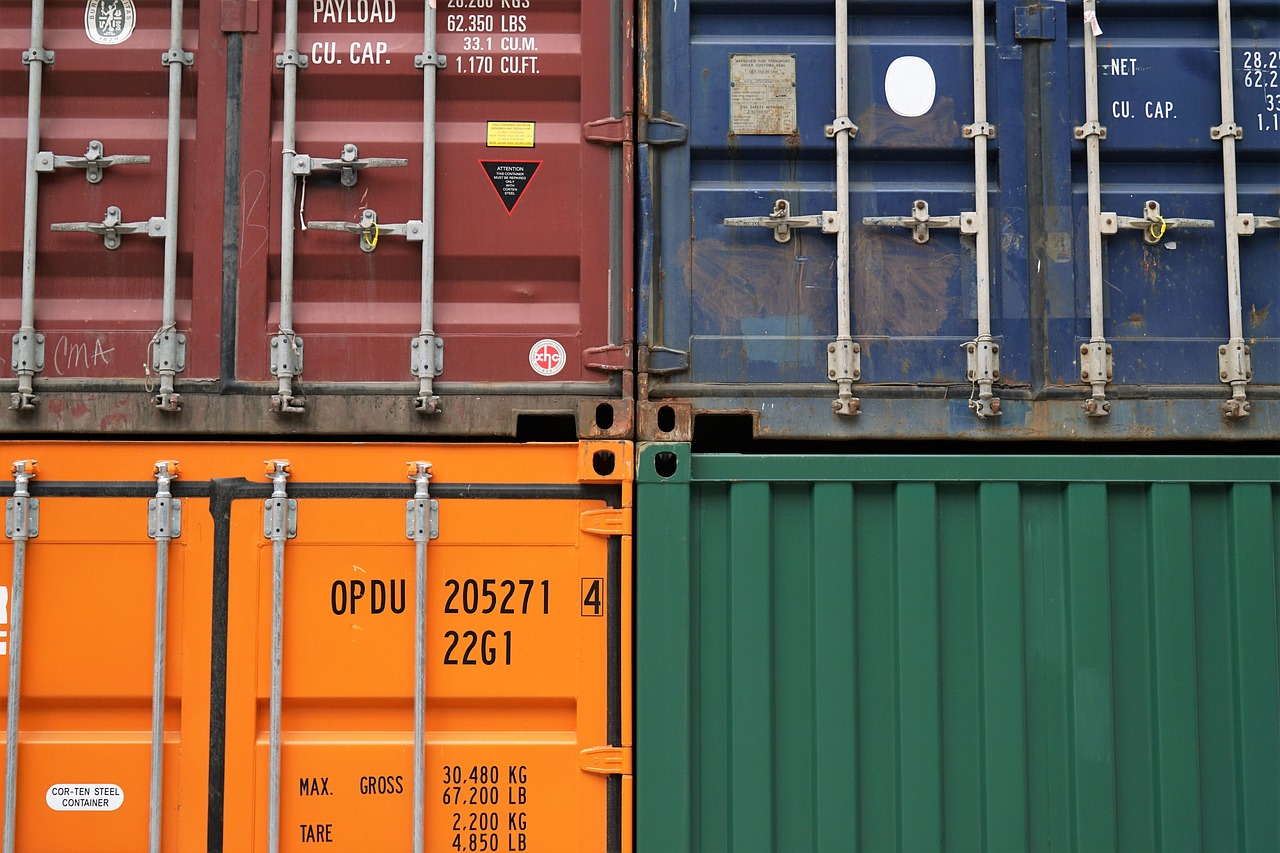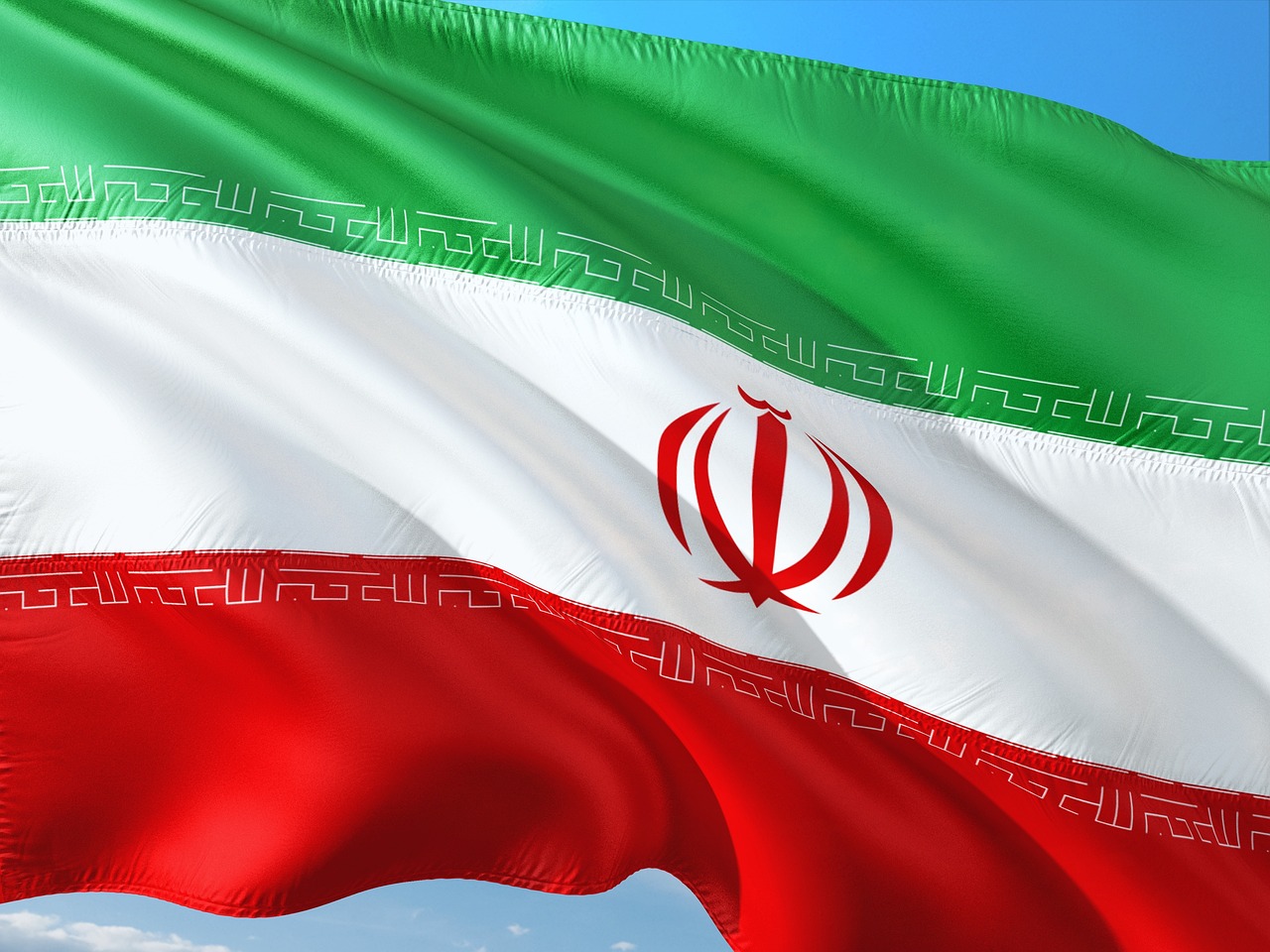MGySgt Luke Revell
Reading Chris Miller’s Chip Wars and Neil DeGrasse Tyson’s Starry Messenger in any temporal proximity causes the reader to ask whether the world is accurately predicting the next technological offset. As tensions continually mount in South East Asia, concerns about the People’s Republic of China conducting a military takeover of Taiwan cause many to wonder what that would do to the world, technologically. Silicon is critical to the current production of semiconductors, often called microchips, which have found themselves in everything from hearing aids (one of the critical drivers of the microchip era) to cars (another essential product) and to green energy solutions. Of course, these chips are in smartphones, computing, and military hardware also require microchips. A global over-dependence on Taiwan’s TSMC spurred America’s CHIPS and Science Act of 2022 and has caused many to look at reshoring high-end electronics production. Considering supply chains are routinely disrupted by several factors, including weather, energy, warfare, and politics, decoupling at the critical assembly step is one of many necessary moves to improve America’s resiliency.
America is not alone in doing this, either. Corporate and state-led initiatives in China, South Korea, Japan, and Taiwan are setting the stage for the diffusion of semiconductor production. However, while America’s government and industry are building resilience into the process, foundries are only one of many weak areas required to stabilize the future of the electronics industry. In his most recent book, Dr. Yossi Sheffi explains:
The term supply chain arose because each product usually requires a series or a chain of specialized steps to make the raw materials, refine them, create product parts, assemble small parts into subassemblies, assemble the final product, and deliver that product to the consumer. (The Magic Conveyor Belt, pg. 27)
While creating parts and the various assembly portions are extremely critical, focusing on this area as the solution creates extreme risk in strategic planning. Fixing supply chains can at the assembly/production level is like pursuing food security in the kitchen. This article will focus on the midstream supply chain, providing an understanding of the concern and how America currently seeks to buy down risk.
Material access does not equal supply.
Although not exactly limitless, Silicon is abundant. It is found worldwide and mined from riverbeds, beaches, and quartz quarries. China has the largest silicon reserves, with Russia and the United States constituting a distant second and third largest holding, respectively. However, reserves are plentiful worldwide, and multiple refineries exist in the United States.
Refining silicon involves heating it to remove oxygen, creating a nearly pure, metallurgical-grade product for producing solar cells, microchips, aluminum, and silicon anode batteries. While a core element for most electronics production, silicon is but one of the elements used for producing advanced technologies. Though considered, the United States Geological Survey did not list Silicon as a critical mineral for national security or economic interest in the 2022 report (released every three years). Silicon, like copper, is an extremely valuable resource; but it does not require a clear supply chain strategy to overcome its near-complete import, excluding it from the list. Other essential elements on the list include lithium, nickel, cobalt, and every rare earth element (REE) except for promethium (promethium does not exist naturally but is a byproduct of uranium fission). While dated, Chart 1 provides general uses for these elements.
Though key regional issues exist with obtaining these critical elements, even REE availability – despite the category title – is tied less to global scarcity than procuring REE in a useable form factor. Critical materials are scarce, and China controls quite a few stockpiles not within friendly territories. Still, the problem is that the United States primarily wants to secure the minerals, not ensure they are readily usable. China does both, which means the US depends on China for 80% of the REE required for national defense products like “global positioning system equipment, satellites, missile defense and guidance systems, sonar and radar systems, lasers, electronic displays, and jet engines” (Dam, 2023, par 5).
American leaders understand that pursuing supply chain resiliency means assuring material supply. A White House-mandated 100-day assessment on supply chain vulnerabilities called these resources “the building blocks of a thriving economy and a strong national defense” (pg. 152). But it is not simply having access to the minerals. Between the 1950s and 1990s, the Mountain Pass Mine was the world’s primary source of REE. California’s Mountain Pass mine was the main exporter of REEs for many years, and as many as 19 other American States have access to mineable REEs. However, Beijing has used abundant RRE and an aggressive strategy to grow its dominance in the REE supply chain for half a century. That doesn’t mean China dominates access to every critical resource. Turkey, China, and Brazil comprise 70% of the world’s known graphite deposits, and according to the United States Geological Survey, China has fewer Lithium reserves than many other nations. However, it still controls much of the world’s resources. This is because accessing raw minerals is often easier than getting them into the production line, and China dominates midstream and downstream production.
| Chart 1: Common Uses of REE (original chart here) | |
| Element | Use |
| Scandium | Aerospace components, aluminum alloys |
| Yttrium | Lasers, TV, and computer displays, microwave filters |
| Lanthanum | Oil refining, hybrid-car batteries, camera lenses |
| Cerium | Catalytic converters, oil refining, glass-lens production |
| Praseodymium | Aircraft engines, carbon arc lights |
| Neodymium | Computer hard drives, cell phones, high-power magnets |
| Promethium | Portable x-ray machines, nuclear batteries |
| Samarium | High-power magnets, ethanol, PCB cleansers |
| Europium | TV and computer displays, lasers, optical electronics |
| Gadolinium | Cancer therapy, MRI contrast agent |
| Terbium | Solid-state electronics, sonar systems |
| Dysprosium | Lasers, nuclear-reactor control rods, high-power magnets |
| Holmium | High-power magnets, lasers |
| Erbium | Fiber optics, nuclear-reactor control rods |
| Thulium | X-ray machines, superconductors |
| Ytterbium | Portable x-ray machines, lasers |
| Lutetium | Chemical processing, LED lightbulbs |
| Source: Originally produced for the October 2011 issue of Scientific American. | |
This dominance comes from the refining process. The overwhelming reason for the dominance of China is lax policies for an extremely dangerous and often damaging process. China became the dominant REE producer because of globalization in the late 20th century and a willingness to accept the environmental impacts of the processes involved. As it gained prominence, many countries found outsourcing refinement to China easier than working through the costs, impacts, and regulations internally. The REE production process consists of mining, smelting, and refining, and only the refining is so ecologically destructive that it became worthwhile to outsource it. This is why the United States, while having significant REE and other critical element mining in-country, still sends 80 percent of its mined material to China to complete the production. Figure 1, from 2019, provides an overview of which nations were actively engaged in mining and which were actively engaged in refinement. While the United States was a primary energy producer, it lacked REE refinement.

After initial mining, smelting can and often does happen on-site, which involves heating the raw materials to separate the majority of REE from other materials. However, refinement is generally a water-heavy acidic process, leaving radioactive runoff, toxic gases, and other residual radioactive materials called Technologically Enhanced Naturally Occurring Radioactive Materials (TENORM). China created local refineries based on its abundant materials, meeting its supply chain needs and capitalizing on economies of scale. Eventually, China dominated global capability, now around 90% of the world’s refining production. Most of these refineries are in the Chinese provinces of Jiangxi, Fujian, and Sichuan provinces. Some of these locations have led to significant ecological concerns.
For example, China’s Bayan Obo in Inner Mongolia is the world’s biggest REE mine. At 48 square kilometers, it is about half the size of Disney World. It is also home to a tailings dam (think: toxic or contaminated lake) that is roughly 10km (more than twice the size of New York’s Central Park). Even outside of the nuclear process, the process is destructive. In the early 1980s, the Australian mining company BHP Billiton opened the Oki Tedi mine in Papa New Guiney. The tailings dam and overburden dump failed even as they were built, leaving silt and earth to flow into local rivers, clogging the waterways. This created dieback in the forests and inundated villages and farming. Although BHB handed the mine over to the local government in the 1990s, the effects of the disaster are being dealt with today. However, Oki Tedi is a gold mine, and REE radioactive waste is one of the key concerns for mineral refinement.
While not the only source of TENORM, mineral refinement can produce and leak TENORM, depositing them into water tables, lakes, rivers, and the ocean. TENORM also spreads as dust that is inhaled or consumed after settling on food crops in the local area. In recent years, China has built refineries in Africa, like the Congo, where two-thirds of the world’s cobalt exists, seeking to outsource its environmental issues. While sometimes protested locally, allowing the import of refineries brings significant employment, capability, and economic investment to these nations. The United States, Australia, Japan, and others have pursued outsourcing mineral refining to low-wage nations in Asia, Africa, Serbia, Estonia, and elsewhere. As the dominance of China’s refinement positioning becomes an increasing concern, the United States should realize that distancing the production of critical materials away from American sources guarantees that the United States will never be in control of its supply chain.
Outsourcing guarantees risk.
Figure 2 The Pinch of processing

Much like TSMC’s dominance in the microchip production world, China dominates in the REE production stage because it was uncontested for so long. After years of dominance, the costs to catch up with production, development, and regulation will be significant. However, the risks of not expanding the midstream between the mines and downstream consumers make it a worthwhile investment. The Responsible Minerals Initiative calls the refinement issue the “Pinch Point” in the supply chain (see Figure 2). Even the abundant minerals mined from Mountain Pass are sold to China for refinement before going on to production. China used its dominance in the REE market in 2010 over a political spat with Japan that shook the high-tech industry. Beijing held shipments of REE to Japan, which drove up the price of raw electronics elements as much as 1000%, demonstrating the impact of controlling these resources. Fears in the United States today include the inability to economically or militarily confront a Chinese invasion of Taiwan; however, the war in Ukraine has underscored the need to find a new way forward that is not beholden to Beijing.
The White House is starting to take notice and focus on this critical area. Supported by the Defense Production Act, the Department of Defense is paying to build an REE separation plant in Texas. Ran by Lynas, the Australian company that faced protests in Malaysia for building the same in 2013, the $120 million contract should be ready in 2025 to separate Heavy and Light Rare Earths. This plant is one of many focused on building American resiliency that matters, considering analysts estimate China could “exhaust the U.S. stock of minerals necessary for its defense apparatus in less than 90 days” (Kelemen and Stonor, 2022, para 7). Notably, Lynas is China’s biggest competitor in the industry. Although in significant debt, Japan has subsidized the corporation to ensure Tokyo has a non-China alternative in the world of REE.
Today, Apple is offsetting Chinese phone production with Indian production and moving iPad, AirPod, and Apple Watch production to Vietnam. There is a great benefit to growing a resilient supply chain with multiple production facilities. However, doing this also exfiltrates key production capabilities, jobs, and taxes, while driving up transportation and trade costs and setting the nation up for further supply chain disruptions in the future. Notably, TSMC will produce Apple microchips in Arizona as early as 2024. This shows the skillset moving in the opposite direction, reshoring a capability the United States has lacked for many years. Continuing along this line of thinking, American leaders from government and industry need to think about how to proceed toward supply chain resilience, regardless of whether for high-tech civilian commerce or government defense.
American leaders from multiple administrations have pursued self-reliance for over a decade; however, refinement – the midstream of material supply – is where America remains weakest. The question is not whether to gain independent capability but how to do so responsibly. Beijing’s growth throughout the last several decades has been coupled with significant elements of concern for American and allied independence, especially as the West has come to rely on Beijing to do its dirty work – quite literally. For America to go forward with the onshoring or friend-shoring of REE refining, it must be with government oversight, industry backing, and a generational look at ensuring environmental protections. One of the major issues is environmental regulation, which would require significant research and advancement to pursue a safer means at scale. However, the American high-tech supply chain currently rides on the back of, although America actively competes against it, its citizens increasingly distrust it, and the United States military and its allies overtly pivot toward it.
Fracking refinement.
Finding a viable environmental approach to refinement is the most straightforward method for gaining a foothold in the refinement process. Even non-REE refinement, like Cobalt and Lithium, have damaged many of the environments in which they are found. Several alternatives are actively being studied, like leeching REEs from water sources and creating batteries from more naturally occurring materials. Japanese researchers have found a way to extract REE from waterways using food starch in an inexpensive and seemingly eco-friendly manner. Creating a safer, better production method is desirable; however, barring a substantial breakthrough in methodology, the best approach today is rigid adherence to current safety standards using the current processes.
Due to technological transformation, new energy needs are only increasing. Rio Tinto’s Jadar lithium project in Serbia could satisfy a reported 90% of Europe’s current demands, but environmental groups worldwide have led the effort to prevent breaking ground. Reactions like this demonstrate that only a whole-of-society effort will succeed with an effort of this magnitude. To this end, Berkshire Hathaway is conducting a feasibility study for California-based lithium refinement in one of the world’s largest deposits. This site would produce nearly twice the lithium of Serbia’s stymied Jadar mine at scale. Corporations are not the only major innovators in America today. Originally awarded a grant in 2019, West Virginia University recently received a follow-on grant from the Department of Energy for a novel approach to reclaiming REE from iron tailings – acid mine drainage (AMD).
AMD is the most prevalent type of contaminated water, often associated with abandoned coal mine runoff. Containing this water typically requires some active form of reclamation; however, the WVU experiment has turned these previously unwanted sites into REE mines. They have reclaimed the metals and REE in the sludge and created clean water as a byproduct. At capacity, one “facility will produce between 5.4% and 7.3% of the global requirements for Terbium and Dysprosium, two of the most sought after and critical” elements (Ziemkiewicz, 2023, par 8). This process not only creates jobs and provides extreme value to the American Supply chain, but it also does it without breaking new ground and while cleaning previously contaminated land. Programs like this will supplant jobs lost to former energy production jobs, like coal mining.
If America wants to be REE independent, it needs the same aggressive investment found in the shale revolution, when the United States became both energy independent and a net oil exporter in less than 15 years. Much of the progress from shale may have been due to tax incentives. However, considering the known risks involved with REE refinement and concerns over the enforcement of fracking processes, new programs and facilities must be closely regulated. For this to happen, the government must be actively involved in incentivizing research, production, and regulation. The United States as a society is not starting from scratch on any of these concepts, and long-time allies and steady trade partners are also working on these issues. If the government can follow industry into aggressive refinement independence, much like shale, the United States could eventually be a net exporter – a very stable position within the global supply stream.
Master Gunnery Sergeant Luke Revell currently serves as the Senior Enlisted Advisor to the United States Marine Corps Director for Intelligence. He is also an adjunct professor at Georgetown University’s Graduate School of Communication, Culture, and Technology. MGySgt Revell served over twenty years in the Marine Corps in multiple key intelligence positions including the intelligence chief for the 31st and 11th Marine Expeditionary Units and the 3d Marine Aircraft Wing.







